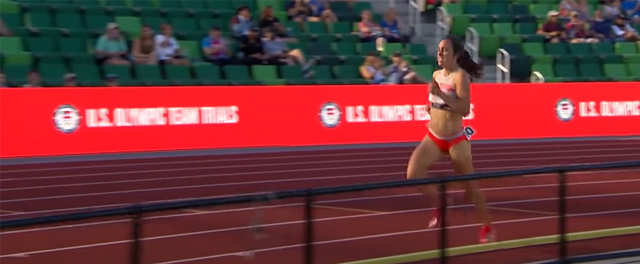Runners have all struggled with the racing strategy dilemma: does the “guts” strategy win raves or does the more scientific “strategic pacing” approach win races?. Turns out they both can. Let’s take a look at that.
No one exemplified the “guts” strategy more than legendary runner Steve Prefontaine (known by fans as “Pre”) of Coos, Bay Oregon. In fact, one of his most famous quotes was, “I am going to work so that it’s a pure guts race. In the end, if it is, I’m the only one that can win it.” That worked well for him as a high school runner: he dominated races and was recruited by 40 colleges. At one point after college, Pre held every American record for distances between 2,000 and 10,000 meters. But on the world stage, at the 1972 Olympics in Munich, Germany, his “guts” strategy failed him. In that fateful race, Prefontaine made a bold move and took the lead after a relatively slow, tactical first two miles. But with a lap to go, he fell back to second, and then third with 200 meters left to go. Lasse Virén, who had paced himself more gradually, took the lead in the final turn and won the race over silver medalist Mohammed Gammoudi. And Britain’s Ian Stewart passed a struggling Prefontaine with only 10 meters to go to take the bronze. A disappointed Pre finished in fourth, with no Olympic medal.
A few weeks ago on June 18 (in a race that included Austin’s Sarah Lancaster), Abbey Cooper used a pure “guts” strategy to reach the finals in the Olympic 5,000 in Eugene, Oregon, Pre’s old racing grounds. Going into the first round, Cooper did not have the required Olympic standard when she lined up. She was aware that the weather forecast for the final of the event called for high temperatures, which could result in a slower race, so she made a bold choice. She chose to race all-out the clock in order to qualify for both the next round, as well as the Olympic standard. With five laps to go, Cooper opened up a dramatic lead, running alone out front to clock 15:07, three seconds under the requisite 15:10 standard. Sadly, she placed fourth on June 21 in the finals in blistering heat, but her gutsy Olympic standard race proved a point.
Mike Morris, a track and cross-country coach for San Marcos high school, knows a thing or two about “guts” versus pacing. He asserts that it all depends on the level of competition. Morris points out that, “There’s a very big difference between high school, college-level, and professional-level racing.”
“Guts can win in high school and college. But things get very tactical and strategic at the professional level. Many times, high school kids are just not mature enough to compete strategically,” said Morris, the 2019 3M Half-Marathon champ, and a 2:19 marathoner.
So yeah, you can win on guts. Pre certainly proved that. But strategic pacing can pay dividends as well, especially when things get tactical. Try both and decide what works best for you!
Upcoming Races: Saturday, July 3 at 7:30 a.m., Firecracker 5K at Lago Vista at Bar K Park Clubhouse. Sunday, July 4 at 7:00 a.m., Popsicle Run 4 Miler at Negley Elementary School in Kyle. Saturday, July 17 at 6:30 a.m., Stars and Stripes Half Marathon/5K/10K in New Braunfels.





